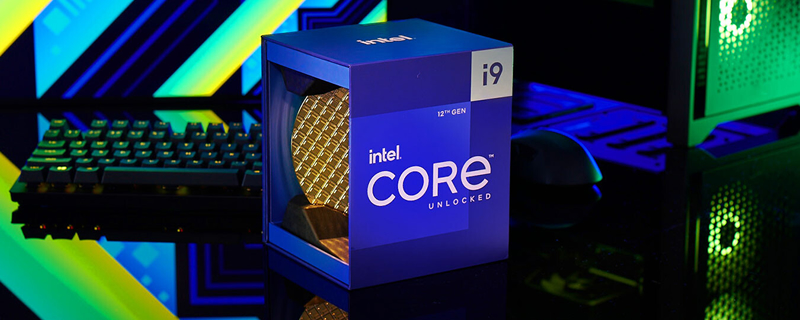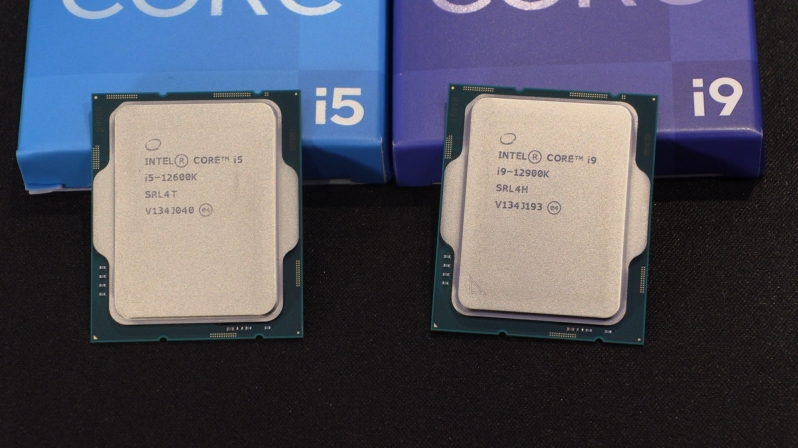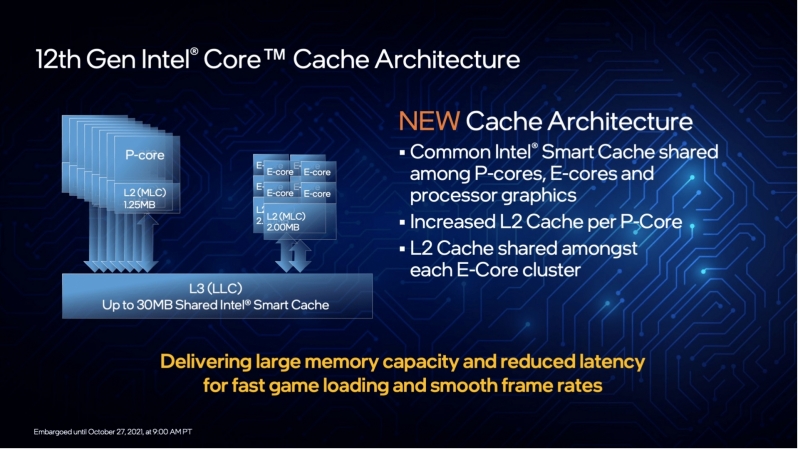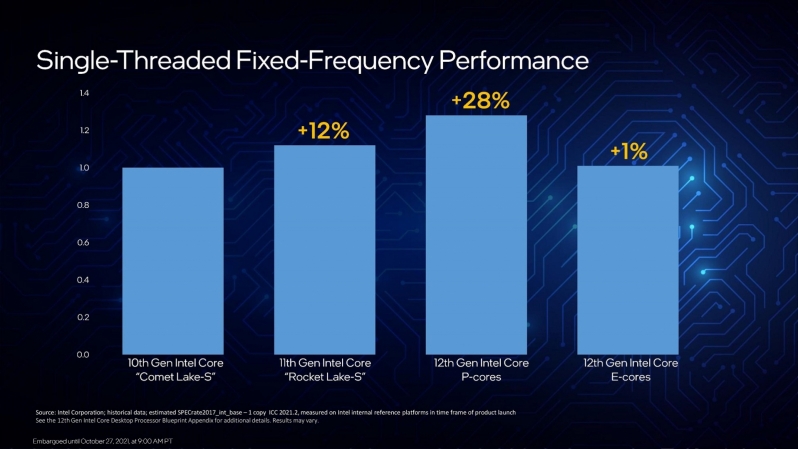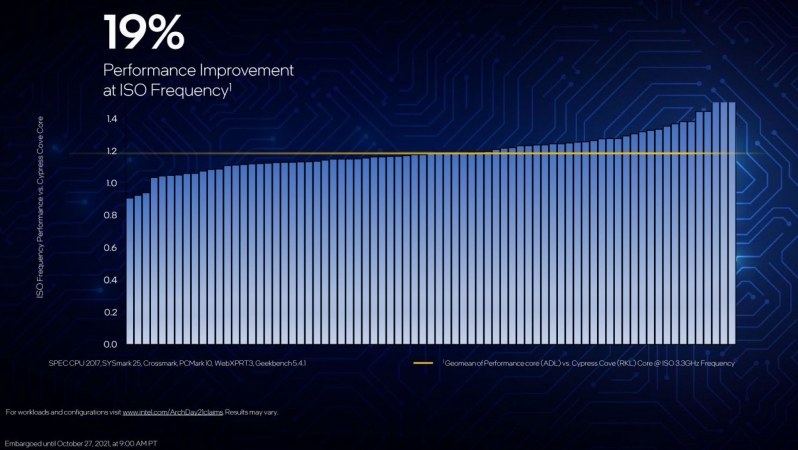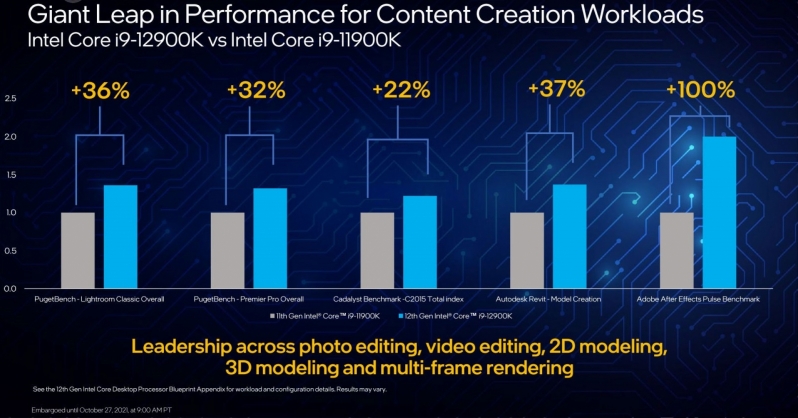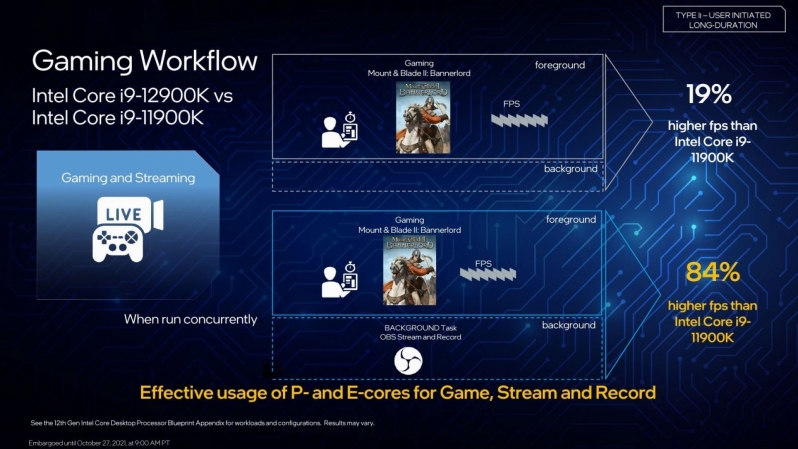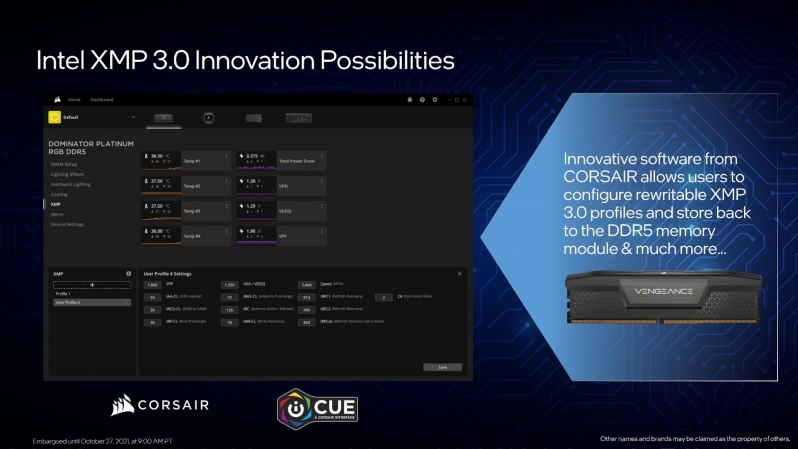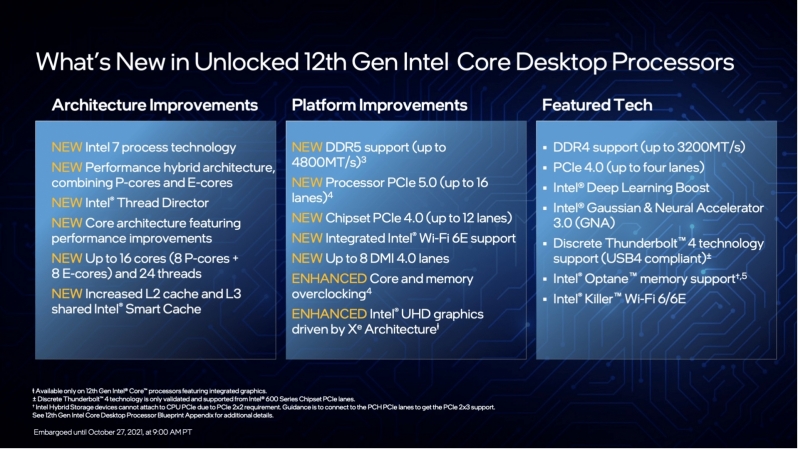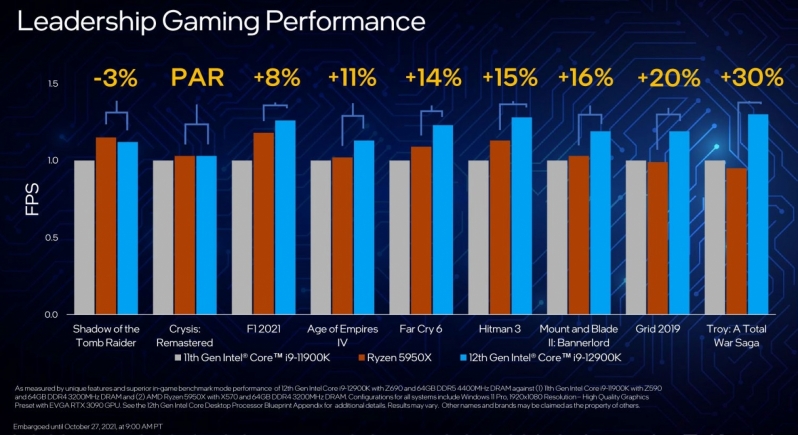Three reasons you should be excited about Alder Lake and one reason your shouldn’t
Why you should, and shouldn’t, be excited about Alder Lake Â
It is an exciting time to be a PC enthusiast, as Intel’s preparing to push the PC hardware industry further with an innovative new CPU architecture, strong IPC gains, a lot of next-generation hardware features. Alder Lake is coming, and it is a game-changer for Intel.Â
We’ve been through the Media briefings, seen Intel’s slides and heard their experts discuss what makes Alder Lake special and why PC enthusiasts should be excited about Intel’s 12th Generation of Core products. This article discusses those reasons and a reason why enthusiasts should wait for reviews before investing in Intel’s latest platform.Â
Reasons to get excited: 1 – A New Node and a New Architecture
Intel recent history has been defined by the company’s long-delayed 10nm lithography process, a factor that has kept the company’s desktop processors on their 14nm lithography technology from their 5th to 11th generations. 14nm lithography was used to create Broadwell, Skylake, Kaby Lake, Coffee Lake, Coffee Lake-R (Refresh), Comet Lake and Rocket Lake. While Intel’s 14nm technology was refined over time, this remains a far cry from Intel’s prior two-year (two-generation) Tick Tock processor cadence.Â
Hybrid x86
With Alder Lake, Intel will be delivering more than a simple tick and a tock. Not only is Intel moving to new process technologies and a new CPU architecture, Intel is also moving to a hybrid x86 model, combining powerful Golden Cove CPU cores with power-efficient Gracemont cores. These Cores have become Intel’s P-Cores (Performance Cores) and E-Cores (Efficient) respectively.
The move to hybrid allows Intel to make efficient use of transistors and CPU die space. Intel can fit four Gracemont cores into the same space as a single Golden Cove core, allowing Intel to bulk out its core count by using a fraction of the die space as a Golden Core only CPU design. Using Gracemont cores allows background tasks to be moved to power-efficient CPU cores while foreground tasks are completed using Intel’s powerful P-Cores. Through Hybrid x86 technology, Intel aims to be more power-efficient than before. Additionally, Intel’s hybrid technology is also designed to deliver more performance than an all Golden Cove design.
Intel’s Hybrid x86 technology works best with the company’s Thread Director, which can be utilised to its fullest extent on Windows 11. In this regard, Windows 11 is required to maximise Alder Lake’s performance.Â
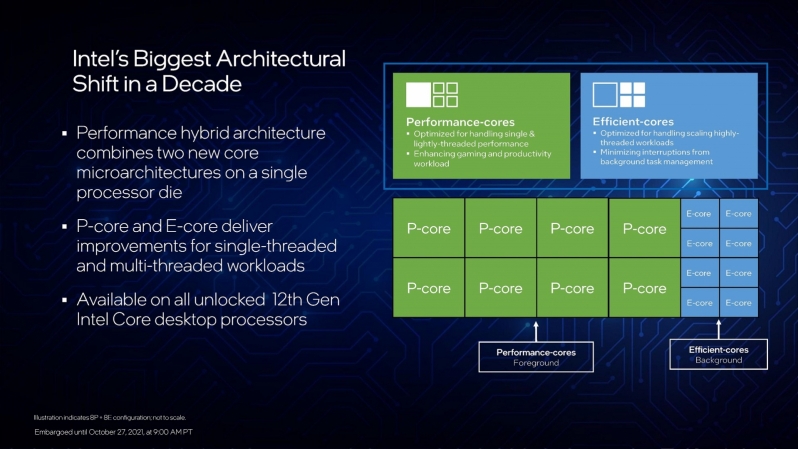 Â Â
 Â
12th Gen Cache Architecture
With Alder Lake, Intel’s giving their desktop processors access to more L2 and L3 Cache, allowing their latest processors to keep more data on-chip, allowing many processes to be completed faster and without needing to access DRAM.Â
With Intel’s i9-12900K processor, there is 30MB of L3 Cache, and on Alder Lake’s P-cores, each core has two times as much L2 cache per core as Rocket Lake.Â
For workloads that are latency-sensitive, having more data on a CPU’s onboard cache is undoubtedly a good thing. This is especially true for gaming workloads. Intel’s primary competitor within the x86 CPU market, AMD, has also been investing heavily in improving and expanding the caches within their Ryzen and EPYC processors. Cache is key, and Intel has delivered some notable improvements to their Smart Cache technology with Alder Lake.Â
Single-Threaded IPC – Alder Lake’s most notable improvement
With Alder Lake, Intel has promised a 19% increase in single-threaded IPC over Rocket Lake. Beyond that, Intel’s power-efficient Gracemont E-Cores also promise to deliver a 1% IPC increase over Comet Lake CPU cores. With this in mind, enthusiasts should not dismiss the performance offered by Intel’s Alder Lake E-cores.Â
With a 19% IPC increase, Intel’s promising significant increase in single-threaded performance over today’s Rocket Lake CPUs. Combine that with Alder Lake’s higher CPU core counts, and Intel’s Alder Lake processors promise major single-threaded and multi-threaded performance gains over their predecessors.Â
Reason 2 – Raw Performance – More Cores, Stronger Gaming, and More Productivity
Intel’s Rocket Lake series processors offer users up to eight CPU cores and sixteen threads. With Alder Lake, Intel’s offering consumers up to sixteen cores and twenty-four threads. That’s a 2x increase in available cores with Alder Lake, and while these additional cores are E-Cores, they remain powerful as an add-on. Â
Â
| Intel 12th Gen Alder Lake CPU Specs and Pricing | ||||||||
| Â | Cores/Threads (P + E / T) |
P-Core Base/Boost | E-Core Base/Boost | L3 Cache | iGPU | US Price | UK Price (Scan UK) |
UK Price (OCUK) |
| i9-12900K | 8 + 8 / 24 | 3.2/5.2 GHz | 2.4/3.9 GHz | 30 MBÂ | UHD 770 |
$589 | £579.99 | £599.99 |
| i9-12900KF | 8 + 8 / 24 | 3.2/5.2 GHz | 2.4/3.9 GHz | 30 MBÂ | – |
$564 | £559.99 | £578.99 |
| i7-12700K | 8 + 4 / 20 | 3.6/5.0 GHz | 2.7/3.8 GHz | 25 MBÂ | UHD 770 |
$409 | £419.99 | £419.99 |
| i7-12700KF | 8 + 4 / 20 | 3.6/5.0 GHz | 2.7/3.8 GHz | 25 MBÂ | – |
$384 | £389.99 | £389.99 |
| i5-12600K | 6 + 4 / 16 | 3.7/4.9 GHz | 2.8/3.7 GHz | 20 MB | UHD 770 |
$289 | £289.99 | £289.99 |
| i5-12600KF | 6 + 4 / 16 | 3.7/4.9 GHz | 2.8/3.7 GHz | 20 MB | – |
$264 | £269.99 | £269.99 |
Â
Content Creation
In content creation workloads, Intel has revealed 22%-100% performance gains over their 11th Generation Rocket Lake series processors. Those performance gains are a big deal for Intel, and will undoubtedly get many creatives to consider upgrading their workstations.Â
Faster render times results in increased productivity, allowing work to be completed faster. This is a big deal for users of the Adobe Creative Suite, 3D modellers and more.Â
When compared to today’s Rocket Lake processors, Alder Lake promises performance increases of between 13% and 28% in gaming workloads. At least in the games showcased below.Â
Gaming performance is a primary driver of system upgrades for many users, making Alder Lake an appealing upgrade prospect for many. That said, it is worth noting that AMD’s Ryzen 5000 processors are not compared in the slides below.Â
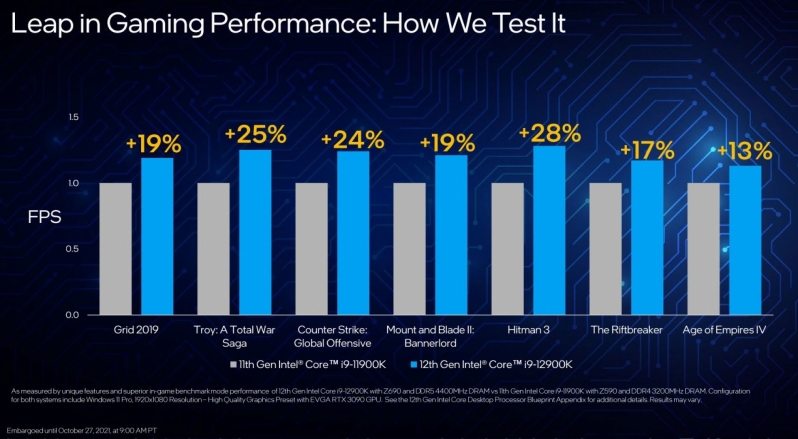 Â Â
 Â
Across a wider selection of games, smaller performance gains are noted in some titles, as are performance gains of over 40% in League of Legends. It looks like Alder Lake won’t increase Intel’s gaming performance across the board, but where Alder Lake works, it works well. More than a few titles have 20%+ performance gains.Â
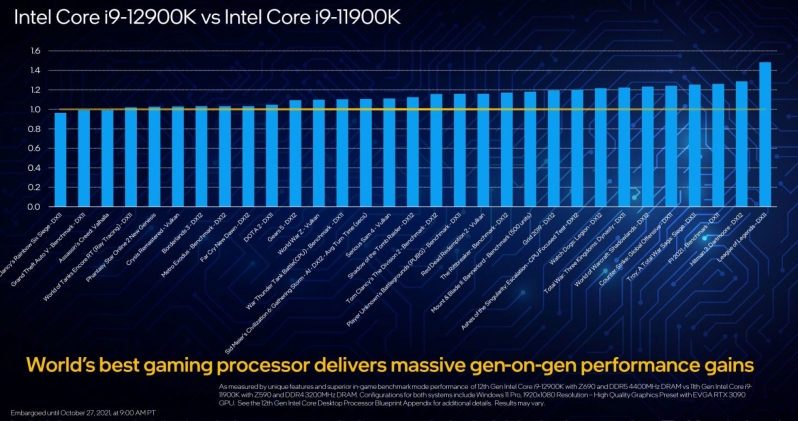 Â Â
 Â
Multi-Tasking – Why More Cores Is Better
While many workloads won’t benefit from higher CPU core counts when run on their own, the same is not true when in a multi-tasking environment. Perhaps you want to do other work while you render a video, or use the same processor to play and stream a videogame. These areas are where high core count processors shine. With 16 cores and 24 threads, it is easy to see why the Mount & Blade II: Bannerlord streaming test below heavily favours Alder Lake over Intel’s 8-core Rocket Lake system.Â
Reason 3: DDR5, Z690 and Next-Gen features
Intel’s marketing is designed to showcase their 12th generation Alder Lake platform as being future proof. With support for DDR5 memory and PCIe 5.0 connectivity, Alder Lake offers the bandwidth that will be required for future workloads. That said, not many consumers today will benefit from the bandwidth offered by PCIe 5.0 and DDR5 when Alder Lake launches.Â
Intel is proud of the fact that they are the first CPU manufacturer to support DDR5 memory and PCIe 5.0 connectivity, making their CPU platform ready for what the hardware industry has to throw at them. When consumers need that extra bandwidth, Alder Lake users will already be ready.Â
With DDR5, Intel has also created XMP 3.0, and it offers more than just settings profiles for your DRAM kits. Users can save custom profiles to their DRAM using XMP 3.0, allowing overclocked profiles to be saved onto their modules, allowing custom DRAM settings to be retained after BIOS updates or on different systems. This makes DRAM overclocking a lot more appealing with Alder Lake, as it should be a lot less frustrating. Â
Â
With Alder Lake, Intel’s offering support for per-core overclocking and a large number of new settings that could enable higher levels of system performance. Want to overclock your CPU’s P-Cores or E-Cores separately? You Can! Want to disable hyperthreading on a per-core basis? You Can. Want to speed up your CPU’s cache frequency/ring bus? Of course you can.Â
Overclockers have plenty of options that they can use to help optimise the performance of their Alder Lake processors, making the prospect of overclocking a lot more appealing than prior Intel CPU generations. That said, it remains to be seen how much performance overclockers will be able to pull out of Intel’s 12th generation processors.Â
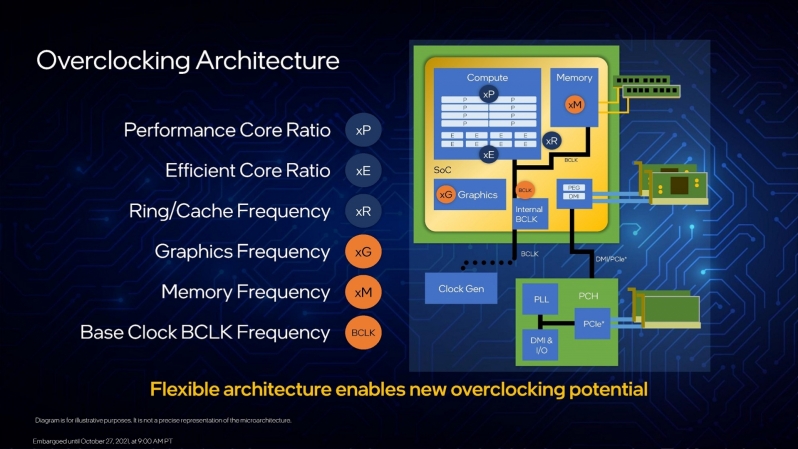 Â Â
 Â
With their 12th Generation Alder Lake, Intel’s offering their users support for a lot of innovative new features. On top of that, Intel will be pushing standards like Thunderbolt 4, and WIFI 6E further into the forefront.Â
Alder Lake does not just offer more cores and threads to consumers, it also offers more bandwidth for connectivity, which is great news for those who utilise external storage devices, Thunderbolt products and a large number of M.2 devices.Â
Why you shouldn’t be excited – False benchmarks and AMD’s absence
During Intel’s briefing, they showed us the slide below, claiming that Alder Lake achieved performance leadership over AMD in gaming workloads. The problem, which Intel admitted, was that these results were obtained using a version of Windows 11 that was known to hobble the performance of AMD’s Ryzen processors.Â
New Windows 11 updates have addressed AMD’s performance issues using Windows 11, and Intel were confident that they would still be able to deliver leadership gaming performance with Alder Lake. The problem was that AMD’s Windows 11 patches were released prior to our briefing with Intel, and Intel is yet to release updated data that reflects AMD’s true gaming performance under Windows 11.Â
As it stands, the benchmarks below are useless, and Intel should never have used them in an official slide deck. Showing this data calls into question Intel’s claim of gaming leadership. Thankfully, reviewers should be providing gamers with a wealth of gaming performance data for Alder Lake and Ryzen 5000 series processors soon.Â
When AMD’s Ryzen 3000 and Ryzen 5000 series processors already offer content creators more cores and more threads than Alder Lake on the high-end, it is strange that Intel would fail to showcase how their latest processors compare to their rivals.Â
Had Intel been able to beat AMD in all areas, surely Intel would have shown us those results? Perhaps this means that Alder Lake is not the breakthrough architecture that Intel claims it to be, or is Intel waiting for reviewers to showcase their lead over AMD? We won’t know until reviews go live.Â
As it stands, Intel’s marketing highlights that their Alder Lake processors can beat their existing Rocket Lake processors in all areas. When it comes to AMD, it remains to be seen whether or not Alder Lake has what it takes to bring Intel back into the leadership position within the x86 market.Â
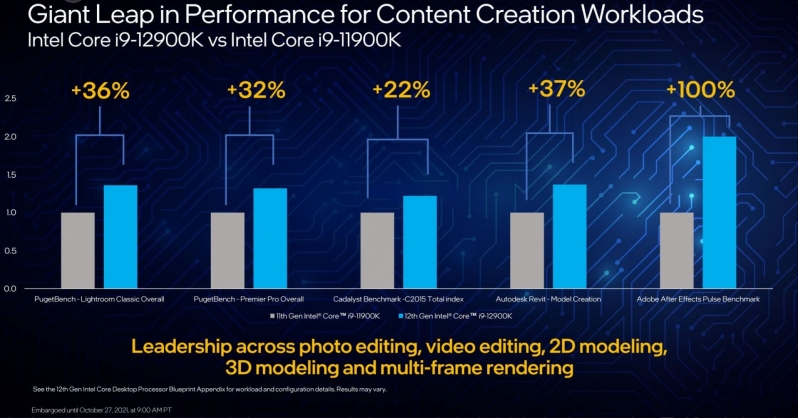 Â Â
 Â
You can join the discussion on Intel’s Alder Lake CPU architecture and our thoughts on it on the OC3D Forums.Â



